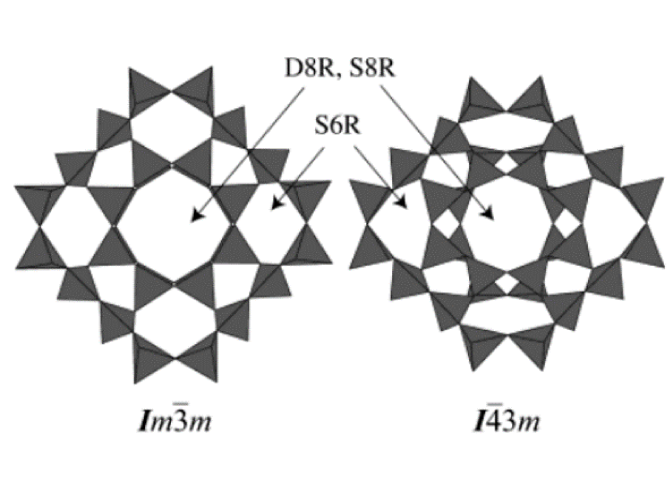"Discovery of a rhombohedral form of the Li-exchanged aluminogermanate zeolite RHO and its pressure-, temperature-, and composition-induced phase transition"
- Authors
Y. Lee, T. Vogt, J.A. Hriljac, J.B. Parise
- Journal
Chemistry of Materials
Vol.14, No.8, pp.3501-3508, 2002.08 - DOI
Abstract
The influence of pressure, temperature, and composition on the crystal structure of Li-exchanged zeolite RHO with an aluminogermanate framework was investigated using synchrotron X-ray powder diffraction. At ambient conditions, aluminogermanate RHO adopts either a rhombohedral (R3) or cubic (I23) symmetry depending on the Li-exchange level. Under hydrostatic conditions mediated by an alcohol and water mixture in a diamond-anvil cell, the rhombohedral 68% Li−AlGe−RHO transforms to a cubic structure near 3 GPa, whereas the cubic 57% Li−AlGe−RHO first transforms to a rhombohedral phase near 0.4 GPa and then back to a cubic structure near 3 GPa. The rhombohedral distortion angle, an order parameter of the low-symmetry structure, increases continuously with pressure while approaching the transition to the cubic form, where it decreases abruptly to the equivalent cubic angle. All of these materials show progressive volume contraction under increasing pressure and the calculated bulk moduli suggests that the rhombohedral phase at intermediate pressures is more compressible than its cubic form at higher pressures. Dehydrated samples of both compositions adopt cubic symmetry at ambient conditions and exhibit normal expansion upon heating. During in situ dehydration of hydrated 68% Li−AlGe−RHO, the rhombohedral angle decreases steadily toward the cubic equivalent value until there is an abrupt volume contraction that starts at 300 K and an accompanying transition to a cubic form near 400 K. The hydrated 57% Li−AlGe−RHO maintains its cubic symmetry during in situ dehydration but displays a similar abrupt volume contraction above 350 K. The inverse pressure−temperature relationship is established as shown by the evolution of the rhombohedral angle and the corresponding cell length under pressure and temperature. The rhombohedral-to-cubic phase transitions including the re-entrant behavior observed in the 57% Li−AlGe−RHO are predicted from a distance least-squares approach to framework minimization.












